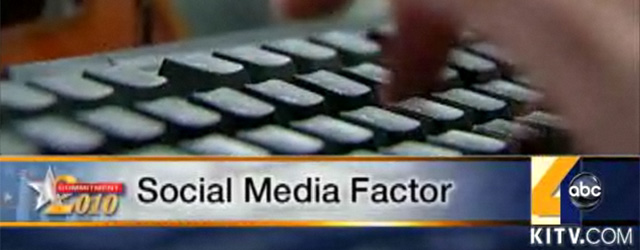Social Media Helped Abercrombie Win
UPDATED | As part of its regular “Social Wire” segment, KITV reported that local political analyst Neil Milner concluded that social media could have helped Neil Abercrombie win by a wide margin over Mufi Hannemann on Saturday.
Yasmin Dar reports:
Two big factors of success have to be transparency and engagement of the candidate. Both Abercrombie and Hannemann had a strong social media campaign. Hanneman had significantly more followers and fans on Twitter and Facebook than Abercrombie, and he had his website translated into different languages, which was unique to only his campaign. But some social media experts say Abercrombie emphasized that it was really him on social media, engagning and talking to his supporters in a real-time conversation.
See the brief segment on the KITV website (“Social Wire: Social Media Campaigning“), or view it on YouTube.
I contacted Milner to ask if he could expand a bit on the comments that KITV only summarized. He quickly replied:
My statement about Neil’s use is really based on very tentative evidence, part of the post-hoc explanations for a huge surprising election result. In my own interviews, I made two points: Both candidates used social media, but I sensed that Neil’s was better because it was very interactive, and because it linked nicely with his old fashioned person-to-person grass roots campaign.
To me, [it was] one of the great lessons of the Obama campaign, which Neil certainly knew about and in small ways (anything is a small way compared to the Obama campaign) emulated it. What Neil’s folks learned from Obama was that social media, combined with sophisticated use of voter databases, can be used to target face-to-face work and reinforce it…
I am only surmising that Neil’s campaign was better at this than Mufi’s, but it is as plausible as any other explanation, and certainly more plausible than the belief that the famous Mufi negative brochure turned things around…
A good thorough investigation of this part of the campaign by someone who knows social media as well as political campaigning would really help.
Meanwhile, I had a quick chat with L.P. “Neenz” Faleafine, Abercrombie’s director of social media. She clarified that Abercrombie was not personally posting to Twitter, but affirmed that he and his campaign staff were paying attention to social media platforms, and crafting messages specifically for them.
“I want to make it clear that Neil Abercrombie does not do all of his own tweets, but if there are no tweets coming from @neilabercrombie, it’s because he’s not available,” she explained. “For the most part, he knows, he reads ’em, he gives a reply, and we post.”
She also pointed out an article in today’s Star-Advertiser:
Mix of stalwarts and young guns brought Abercrombie success
For a veteran such as Abercrombie, the campaign was a successful combination of the powerful skills of old-time Democratic campaign organizers and the new technology of the iPhone generation.
Faleafine says she’ll soon post her own observations and reflections on the role of social media in the Abercrombie campaign, but that most of the focus for her and the team is winning the general election in November.
After that, she notes, she’ll hopefully be able to share some interesting numbers and other statistics that will add insight into the role the social web played in local politics this year.


